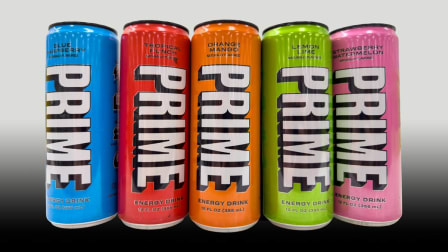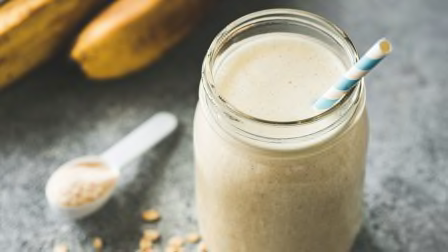Is Cottage Cheese Good for You?
Once considered an old-fashioned diet food, it’s now very much on trend—and that’s a good thing

It’s a dip, a pasta sauce, a bread spread—even a base for ice cream. It’s…cottage cheese? Yep, the diet food staple of the 1970s is making a comeback, thanks to social media. "Everything comes around full circle, and it’s time for cottage cheese to get its day," says Debbie Petitpain, MS, RDN, chief operating officer at Synergy HealthCare Technologies and a spokesperson for the Academy of Nutrition and Dietetics.
Why the renewed interest? Cottage cheese checks many (if not all) of the boxes for nutrition, affordability, and other good things.
What’s more, it’s incredibly versatile. Not only can you find sweet and savory recipes that call for it, but there’s a lot going on in the dairy case—single-serving cups, new flavors, and labels promoting live active cultures, high protein content, and a smooth texture. So if you haven’t spooned up some cottage cheese in a while, it might be worth a second look.
- Cottage Cheese: Nutrition Full-Fat vs. Low-Fat How it Compares to Yogurt What to Do With It
Cottage Cheese Nutrition
Cottage cheese is a fresh cheese; it’s not aged or ripened the way hard cheeses like cheddar or Parmesan are. To make it, an acid or acid-producing culture is added to milk (usually nonfat), which begins the process of separating the liquid whey protein from the milk solids, or curds. The curds are washed, then cream and salt are added.
The curds are what give cottage cheese its lumpy appearance. (Although ricotta cheese looks similar, it’s made from the whey that’s left during cheese making.) Some cottage cheese comes with large curds, some with small; the product’s label will let you know which one it contains. Nutrition-wise, there generally isn’t a difference, so choose the one you like best. If the texture of cottage cheese is what stops you from eating it, you can get rid of the lumps by blending cottage cheese in a blender or food processor. Or look for brands that are smooth or whipped.
Full-Fat vs. Low-Fat Cottage Cheese
Compared with full-fat cottage cheese, lower-fat varieties save you a few calories, which may be beneficial if you’re looking to lose weight, says Petitpain. The difference between nonfat and full-fat cottage cheese is about 30 calories per half-cup; the low-fat (called 2 percent) options have about 20 fewer calories than full-fat.
The savings in saturated fat are similarly small, with 2 percent cottage cheese supplying 1.4 grams of saturated fat per half-cup. And although keeping overall saturated fat intake low is beneficial for health, some research suggests that full-fat dairy products might not raise the risk of heart disease, possibly because of the nutrients or the type of saturated fat they contain.
The downside to lower-fat products? They’re more likely to have added thickeners like carrageenan and guar gum, Schoenfuss says. Some full-fat cottage cheese contains these additives as well, however, so check ingredients lists to be sure of what you’re getting. Ideally, cottage cheese should contain just milk, cream, salt, and sometimes live and active cultures.
How Cottage Cheese Compares to Yogurt
Cottage cheese and yogurt are much the same nutritionally. The biggest difference is in the sodium count, but if you choose lower sodium versions, you’ll get similar amounts of all the nutrients.
| 2% Cottage Cheese, 1/2 Cup | Low-Fat Greek Yogurt, 1/2 Cup | |
| Calories | 93 | 90 |
| Saturated Fat | 1.4 g | 1.5 g |
| Protein | 12 g | 12 g |
| Calcium | 116 g | 141 mg |
| Sodium | 363 mg | 42 mg |
What to Do With Cottage Cheese
Of course, cottage cheese is delicious combined with fruit, but there are many more ways to work it into your diet:
• Add it to smoothies in place of yogurt.
• Whisk it into scrambled eggs as you cook them for a boost of protein and a fluffy texture.
• Combine it with chopped veggies (such as chopped tomato, cucumber, and bell pepper) and seasonings, or chopped walnuts, olives, and black pepper.
• Use it plain or seasoned as a toast topper.
• Mix tomato sauce into a scoop of cottage cheese for a snack that tastes like lasagna filling.
• Use it to make a healthier Alfredo pasta sauce (you’ll find a variety of recipes online).




















